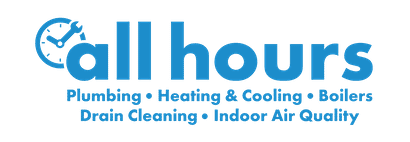Decoding Common HVAC Terminology
Decoding Common HVAC Terminology
12 Common Heating and Air Conditioning Terms You Should Know
When you hire a technician to work on your heating or cooling system, you may hear a few terms that are confusing or new. At All Hours Plumbing, Heating & Air, Drain Cleaning, Heating & Air, our professionals will always take the time to explain the industry terminology to customers, and we do our best not to use too much confusing jargon. If you’re researching new heating or air conditioning systems, reading about indoor air quality or looking up how to lower your heating and cooling costs, here are some terms you should know.
1. HVAC
The term HVAC is an acronym that means heating, ventilation and air conditioning. This term represents the entire industry, and it’s also used in mechanical engineering. The term may be used to describe services or equipment for residential or commercial structures.
2. Air Changes Per Hour
Air changes per hour is a measure of the hourly ventilation rate divided by the total volume of the structure. Another way to describe it is how many times per hour all the air in the structure is exchanged through passive or mechanical means. You may see it as an abbreviation called ACH or ac/hr. It is also called the air change rate or air exchange rate. It’s a consideration when you’re purchasing a new heating or cooling system.
3. Air Handler
An air handler or air handling unit is a central, indoor piece of equipment. It contains a blower, heating and cooling elements or coils and a filter rack or chamber. It may also have a built-in humidifier, dehumidifier or UV light. If your home has a central air conditioning system or heat pump, you have an air handler. It may be abbreviated as AH or AHU.
4. British Thermal Units
British thermal units, or BTUs, measure units of heat. A BTU is more than 1 kilo-Joule. One BTU is the amount of energy required to increase the temperature of one pound of water by one degree Fahrenheit. The power of heating systems, cooling systems and dehumidifiers is often represented by BTUs or BTUs per hour.
5. Condenser
A condenser is part of a refrigeration, air conditioner or heat pump system. Condensers are used in air-source, water-source and ground-source systems. It removes heat from the indoor air. You’ll find a condenser located on the “hot side” of the system. They transfer heat from warm indoor air to a cold liquid refrigerant. The liquid refrigerant is pushed through a series of coils, and the heat is dissipated through those coils.
6. Dehumidifier
A dehumidifier is a piece of equipment that removes humidity from indoor air. It cools air to a temperature where water condenses from its vapor state to its liquid state. The liquid may collect in a drain pan that feeds into a hose or condensate line. It may also collect in a reservoir that has to be manually emptied. A whole-home dehumidifier connects to air handlers. There are also portable dehumidifiers.
7. Heat Pump
Heat pumps are dual-function units. They have large compressors that cycle hot or cold air with the help of a chemical refrigerant. A heat pump’s job is to move heat energy from one location to another. In the summer, it moves heat from your home to the outdoors. In the winter, it absorbs heat from the outdoor air if it’s an air-source heat pump or from the Earth if it’s a geothermal heat pump. It can cool or heat a home. Most air-source heat pumps also include a backup or emergency heating element. These automatically turn on when the outdoor air can’t supply enough heat energy to warm the home.
8. Heating Seasonal Performance Factor
Heating Seasonal Performance Factor, or HPSF, measures how efficiently a heating system converts input energy into output heat. This measurement is used for heat pumps. When you live in a place with moderate to cold winters, it is a rating that you should focus on when purchasing a heat pump for your home. A fair HSPF rating is 8 to 10. If you want to lower your wintertime heating costs, look for an Energy Star certified heat pump. Its HSPF will be at least 12.
9. Seasonal Energy Efficiency Ratio
Seasonal Energy Efficiency Ratio, or SEER, is a ratio of how much energy is put into a system compared to how much cooling power it delivers over the same period of time. It is a rating used for air conditioners and heat pumps during the cooling season. People who live in a place with warm to hot summers should focus on the SEER rating when buying a new air conditioner or heat pump. SEER ratings range from 1 to 25. The current minimum SEER for an air conditioner or heat pump is 13. The higher the SEER, the less electricity it uses. People in warm to hot climates should look for a heat pump or air conditioner with a SEER rating of 16 or better. Most new air conditioners offer SEER ratings of 21 or more.
10. Thermostat
Thermostats are control centers. They monitor and regulate the functions of heating and cooling systems. You use them to set the temperature for heating or cooling. Old thermostats require manual adjustments. Programmable thermostats have been common for at least 10 years, and they offer touchscreen settings. In the past few years, smart thermostats have been available. They include an app for controlling your home’s temperature through your smartphone. Smart thermostats connect to your Wi-Fi.
11. Two-Stage Compressor
A two-stage motor or compressor allows an air conditioner or heat pump to operate on different settings during different seasons or weather conditions. The low setting is used during moderate weather. This setting uses 50% to 70% of the unit’s power. The high setting uses full power and consumes more electricity. The high setting is only used during times of extreme weather. The system automatically chooses the right setting for the current weather conditions.
12. Zoning
An indoor zoning system divides a home or building into separate zones for heating and cooling. Each zone is controlled independently of the other. This allows you to heat or cool one section at a time. If you desire a different temperature in each zone, the zoning system accommodates this. A mini-split heat pump allows you to have up to four zones. Each zone has its own air handler and thermostat. They connect to one outdoor unit that looks the same as the outdoor portion of a standard air conditioner or heat pump. People choose zoning systems in order to accommodate each household member’s temperature preferences and to save money on heating and cooling costs.
All Hours Plumbing, Heating & Air, Drain Cleaning, Heating & Air is Salt Lake City’s trusted source for heating and air conditioning maintenance, repair, replacement and installation services. Homeowners also turn to us for plumbing and fireplace work. If you’re a business owner, our commercial services give you peace of mind. To learn more about common heating, ventilation and air conditioning terminology or schedule service, contact us at All Hours Plumbing, Heating & Air, Drain Cleaning, Heating & Air today. We’re available for residents throughout Salt Lake City and Heber City.

Meet the Team
All Hours Plumbing, Heating and Cooling provides affordable plumbing, HVAC, and drain cleaning services in Salt Lake City, UT. We offer 24-hour emergency services and we’re dedicated to providing the absolute highest quality service at the best prices. We don’t overbid, and we don’t underbid with the idea of tacking on hidden fees; we simply give honest prices with honest answers.
Our complete lines of Salt Lake City plumbing and HVAC services include everything from drain cleaning and water heater replacement, to air conditioning repair and furnace maintenance. No matter what you need (or when you need it!), when it comes to your plumbing or HVAC, we have you covered. Reach out to us when you need plumbing or HVAC help, and we’ll show you how easy it can be to get your home’s systems working well again soon!

Honest Pricing
Honest Answers

Clean Home
Guarantee


